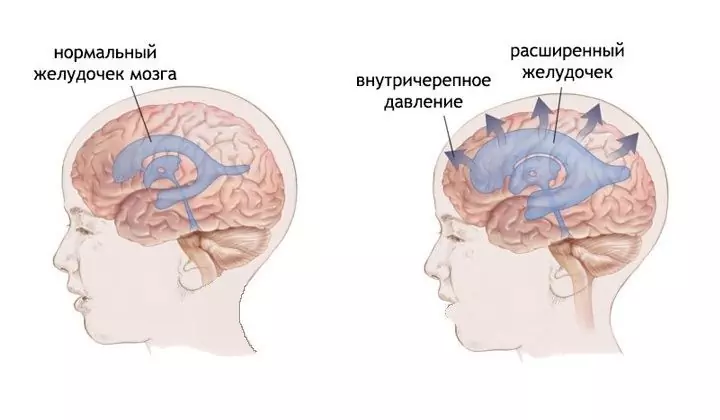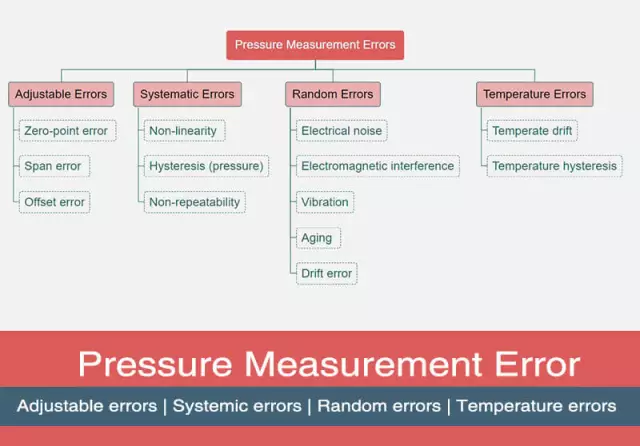- Author Rachel Wainwright [email protected].
- Public 2023-12-15 07:39.
- Last modified 2025-11-02 20:14.
Intraocular pressure: the rate and reasons for the increase, measurement technique
The content of the article:
- Intraocular pressure: normal
- Reasons for IOP deviation from the norm
- High and low intraocular pressure: symptoms
- Intraocular pressure measurement technique
- How to lower intraocular pressure
- Reduced intraocular pressure: treatment
- Video
Intraocular pressure (IOP) is the pressure exerted from the inside on the sclera and cornea by the contents of the eyeball (intraocular fluid, vitreous). Its normal value is important for the normal course of metabolic processes in the tissues of the eye in humans, maintaining its spherical shape, which is necessary for good vision.

Eye pressure is measured by two methods - contact or non-contact
Intraocular pressure: normal
Normal pressure inside the eyeball is maintained due to the balance between the production of aqueous humor and its outflow through the trabecular network located in the corner of the anterior chamber. If this balance is disturbed for any reason, then the eye pressure increases (glaucoma) or decreases.
In adults, the daily changes in pressure inside the eye are 3-6 mm Hg. Art. These fluctuations are influenced by the following factors:
- fluid intake;
- systemic or local use of certain drugs;
- breath;
- heartbeat.
Increased IOP is observed after playing wind musical instruments, drinking caffeinated beverages, as well as in women after intense fitness exercises or in men after lifting weights.
A decrease in eye pressure is observed in patients after taking glycerin, alcohol abuse, and smoking marijuana.
Average values of normal eye pressure (depending on the measurement method) and possible deviations are presented in the table:
| True pressure | Tonometric pressure (according to Maklakov) | |
| Norm | 10-20 mm Hg. Art. | 12-25 mm Hg. Art. |
| The initial stage of glaucoma | 21-22 mm Hg. Art. | Up to 26 mm Hg. Art. |
| Moderate glaucoma | Up to 26 mm Hg. Art. | Up to 30 mm Hg. Art. |
| Stage III glaucoma | Up to 35 mm Hg. Art. | |
| Terminal glaucoma | Over 35 mm Hg Art. |
Speaking about what pressure is considered normal, it should be borne in mind that it also depends on the age of the patients. In the age group over 50-60 years old, the IOP indicator slightly increases and is 23-25 mm Hg. Art. Such figures do not indicate the presence of pathology, but they require careful medical supervision with the obligatory measurement of eye pressure at least twice a year.
Reasons for IOP deviation from the norm
An increase in eye pressure can be caused by:
- a state of chronic stress;
- systematic mental or physical stress;
- long work at the computer;
- anomalies in the structure of the eyeball;
- severe atherosclerosis;
- high degree of hyperopia;
- arterial hypertension.
Reduced IOP may be due to the following reasons:
- pathological changes in the ciliary body (anterior uevitis, cyclodialysis);
- acidosis;
- diabetic coma;
- uremic coma;
- increased osmotic blood pressure;
- severe hypotension.
High and low intraocular pressure: symptoms
Decreased IOP (eye hypotension) can develop rapidly or increase gradually. The patient has:
- edema of the optic disc, followed by the development of macular degeneration and atrophy of the optic papilla;
- clouding of the vitreous body;
- the appearance of folds on the retina;
- keratopathy.
All this causes a significant decrease in visual function. In the absence of the necessary treatment, the outcome of eye hypotension is complete and irreversible loss of vision.
Signs of increased IOP are:
- violation of twilight vision;
- the occurrence and rapid progression of myopia;
- rapid eye fatigue;
- narrowing of the visual fields;
- increased tearing or dry eyes;
- redness of the eyes;
- headache, which is usually localized in the forehead;
- feeling of pressure on the eyes from the inside;
- when looking at a light source, the appearance of rainbow circles in front of the eyes, flickering flies.
The increased pressure inside the eye has a negative effect on the condition of the optic nerve - over time, a gradual atrophy of its fibers begins. Clinically, this is manifested by an irreversible deterioration in visual function.
Intraocular pressure measurement technique
If the above symptoms appear, you should immediately contact an ophthalmologist for the necessary examination with the obligatory measurement of the pressure inside the eye.
You can measure IOP in one of two ways:
- Tonometry according to Maklakov. Before the procedure, anesthetic drops are instilled into the eyes. After that, a small weight is applied to the cornea, weighing 5-10 g, and then transferred to a special paper with a scale. The size of the imprint left by the load is used to judge the IOP level.
- Non-contact tonometry. With this method, there is no direct contact of the instrument with the tissues of the eye. A jet of compressed air is supplied to the cornea, and the IOP level is determined by measuring the resistance of the cornea to this jet.
If an IOP deviation from the norm is revealed, further examination of the patient is necessary, which will reveal why these deviations arose, what was the root cause.
How to lower intraocular pressure
To reduce the increased IOP, the patient is prescribed special eye drops that enhance the outflow of intraocular fluid.
In cases where conservative therapy is ineffective, there are indications for surgical intervention. There are different methods of surgical treatment. Currently, preference is given to operations performed with a laser:
- stretching the trabeculae;
- excision of the iris.
For effective treatment, it is necessary to determine what caused the increase in intraocular pressure and, if possible, eliminate this cause. For example, to correct the level of blood pressure, to normalize the daily routine, to stop drinking a large number of caffeine-containing drinks (strong tea, coffee, coca-cola, energy).

To reduce eye pressure, drops are instilled into the eyes that enhance the outflow of fluid
Reduced intraocular pressure: treatment
With a low IOP, therapeutic measures are aimed at eliminating the cause, they may include the following measures (and more often a combination of several of them):
- opening of the suprachoroidal space;
- closure of the fistula;
- anti-inflammatory therapy;
- therapy of a common disease.
In addition, drugs that improve metabolic processes in the tissues of the eye (ATP, angioprotectors, vitamins) must be included in the treatment regimen.
Both increased and decreased IOP are dangerous for the function of vision. Therefore, any deviation of eye pressure from the norm should be detected in a timely manner, and the patient should be prescribed the necessary treatment.
Video
We offer for viewing a video on the topic of the article.

Elena Minkina Doctor anesthesiologist-resuscitator About the author
Education: graduated from the Tashkent State Medical Institute, specializing in general medicine in 1991. Repeatedly passed refresher courses.
Work experience: anesthesiologist-resuscitator of the city maternity complex, resuscitator of the hemodialysis department.
Found a mistake in the text? Select it and press Ctrl + Enter.






